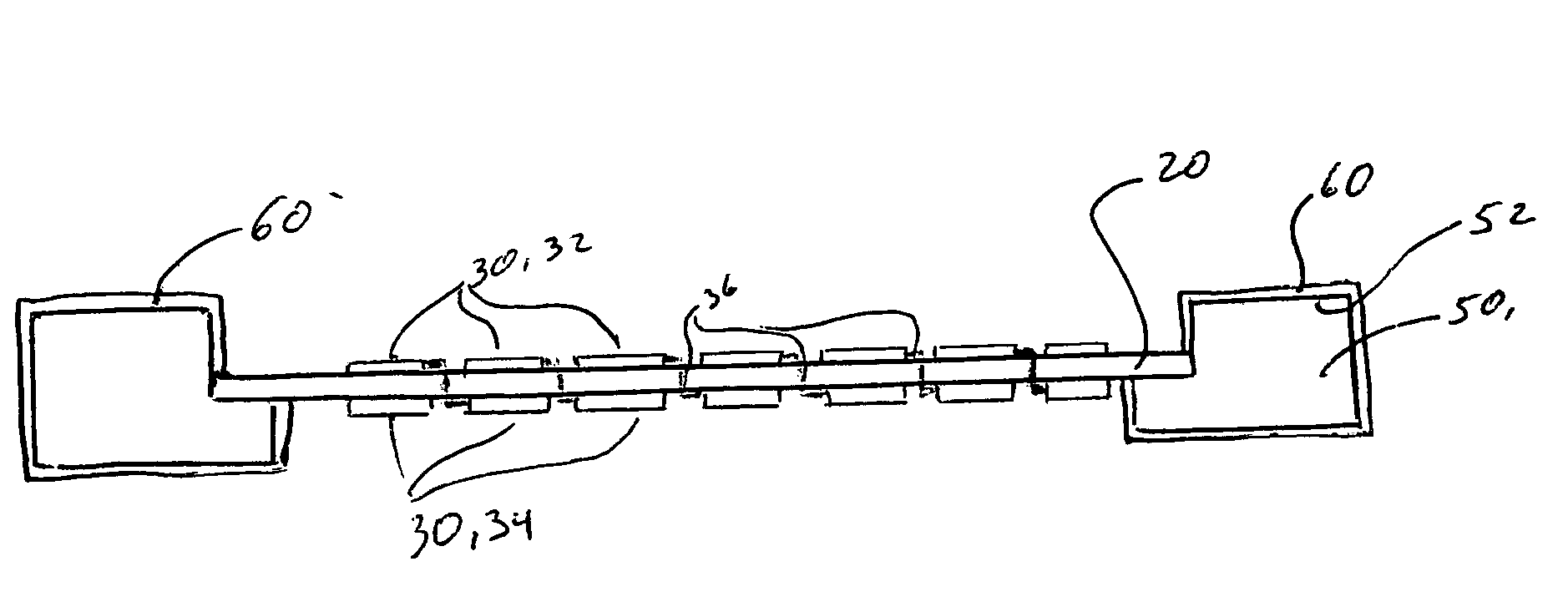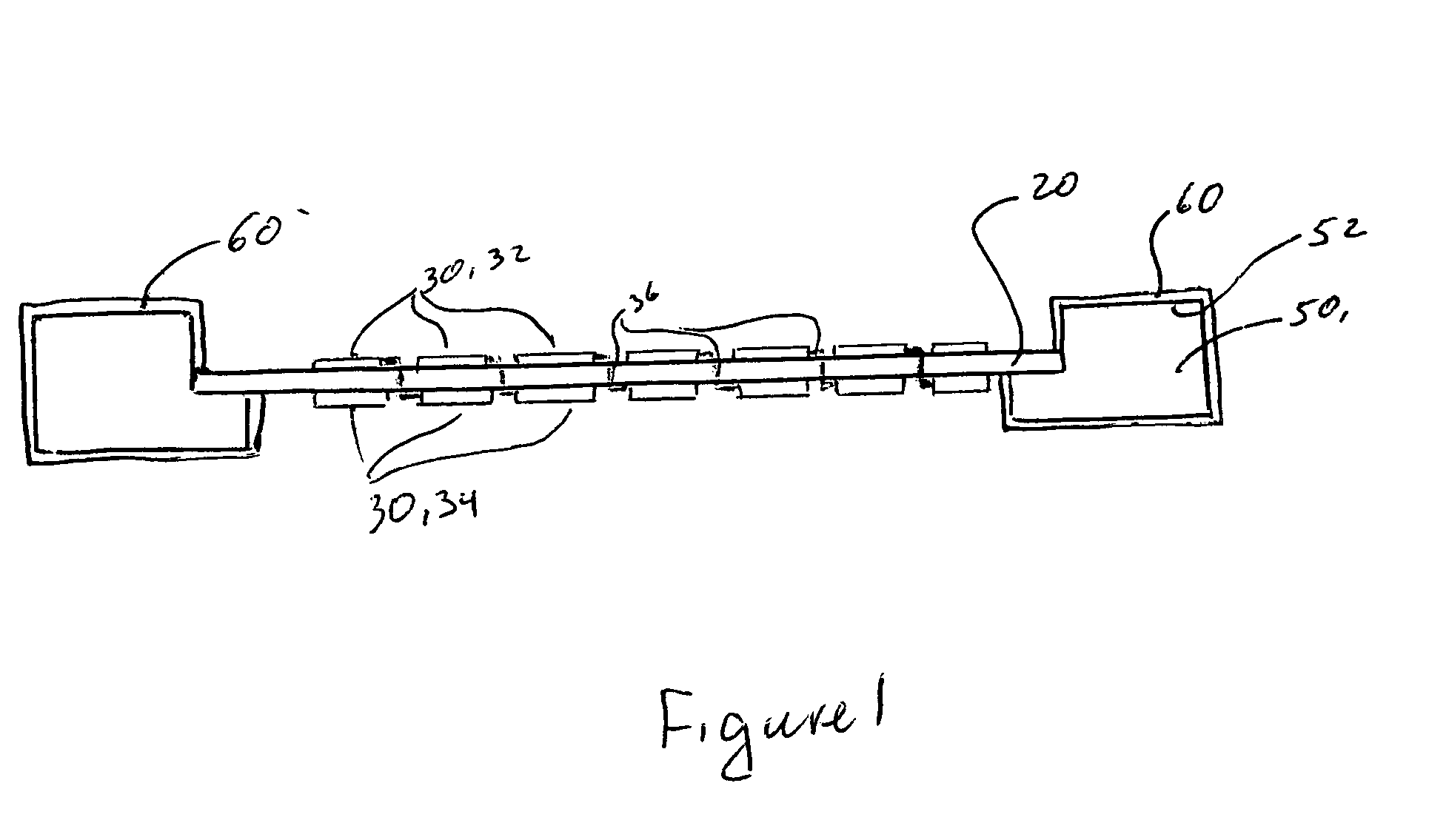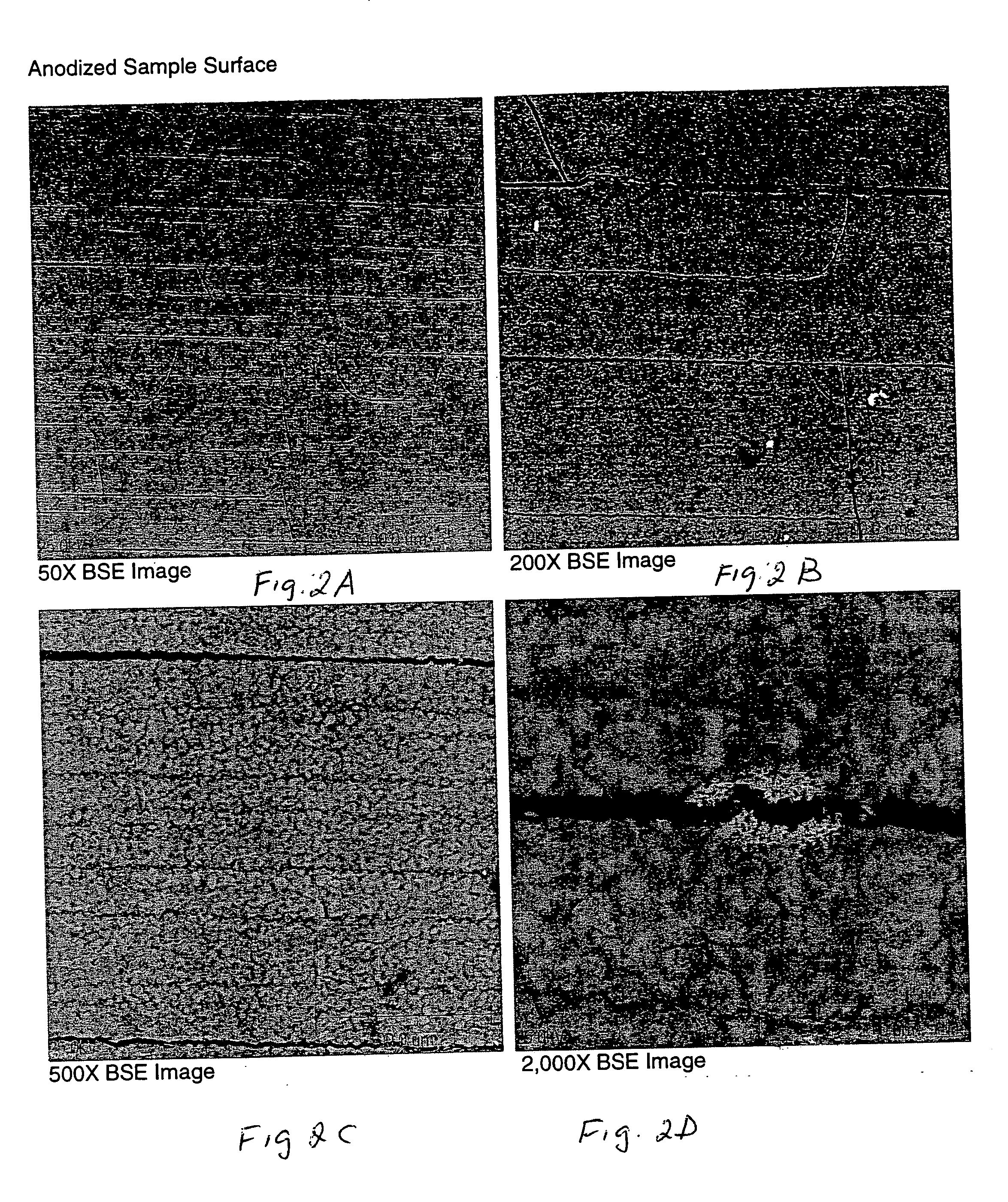Solid oxide fuel cell device with a component having a protective coatings and a method for making such
a fuel cell and protective coating technology, applied in the field of coatings on metal components, can solve the problems of rapid degradation of the performance of sofc cathodes, and achieve the effect of improving performan
- Summary
- Abstract
- Description
- Claims
- Application Information
AI Technical Summary
Benefits of technology
Problems solved by technology
Method used
Image
Examples
example 1
[0030] A solid oxide fuel cell device 10 shown in FIG. 1 includes: (a) yttria-stabilized zirconia (YSZ) electrolyte sheet 20; (b) a plurality of electrodes 30 situated on the electrolyte sheet 20, including at least one cathode 32; and (c) a metal frame 50 supporting the electrolyte sheet 20 and the electrodes 30 attached thereto. In this embodiment the electrolyte sheet 20 supports a plurality of cathode 32-anode 34 pairs and has a plurality of via holes filled with via interconnects 36.
[0031] It is preferable that the frame 50 and the electrolyte sheet 20 have similar coefficients of thermal expansion (CTE). Thus, because zirconia based electrolytes have a CTE of 11.4×10−6° C., it is preferable that the frame 50 has a CTE in the range of 10×10−6 / ° C. to 12.5×10−6 / ° C. It is more preferable that the CTE of the frame 50 be in the 11×10−6 / ° C. to 12×10−6 / ° C. range and most preferable that it is in 11.2×10−6 / ° C. to 11.7×10−6 / ° C. range. In this example the metal frame 50 is manufac...
example 2
[0032] The aluminum oxide protective coating 60 may be produced by several methods. For example, it may be produced electrochemical oxidation of aluminum metal. Aluminum metal is first electrodeposited (using a nickel strike) on the component 50, for example stainless steel frame of example 1. An aluminum coating can be electroplated from inorganic and organic fused salt mixtures and from solutions of aluminum in certain organic solvents. Commercial aluminum electroplating services are available, for example, from AlumiPlate, Inc. of 8960 Springbrook Dr., Minneapolis, Minn. 55433-5874 USA.
[0033] In this example, a Ni strike was utilized to enable better aluminum coating of the 446 stainless steel. Subsequently, the aluminum (Al) coating is electrochemically oxidized (anodized) to aluminum oxide. Alternatively, aluminum oxide coating may be created by electroplating and subsequent thermal oxidation of Al coating. Whereas anodizing is typically associated with aluminum, similar proce...
PUM
 Login to View More
Login to View More Abstract
Description
Claims
Application Information
 Login to View More
Login to View More - R&D
- Intellectual Property
- Life Sciences
- Materials
- Tech Scout
- Unparalleled Data Quality
- Higher Quality Content
- 60% Fewer Hallucinations
Browse by: Latest US Patents, China's latest patents, Technical Efficacy Thesaurus, Application Domain, Technology Topic, Popular Technical Reports.
© 2025 PatSnap. All rights reserved.Legal|Privacy policy|Modern Slavery Act Transparency Statement|Sitemap|About US| Contact US: help@patsnap.com



